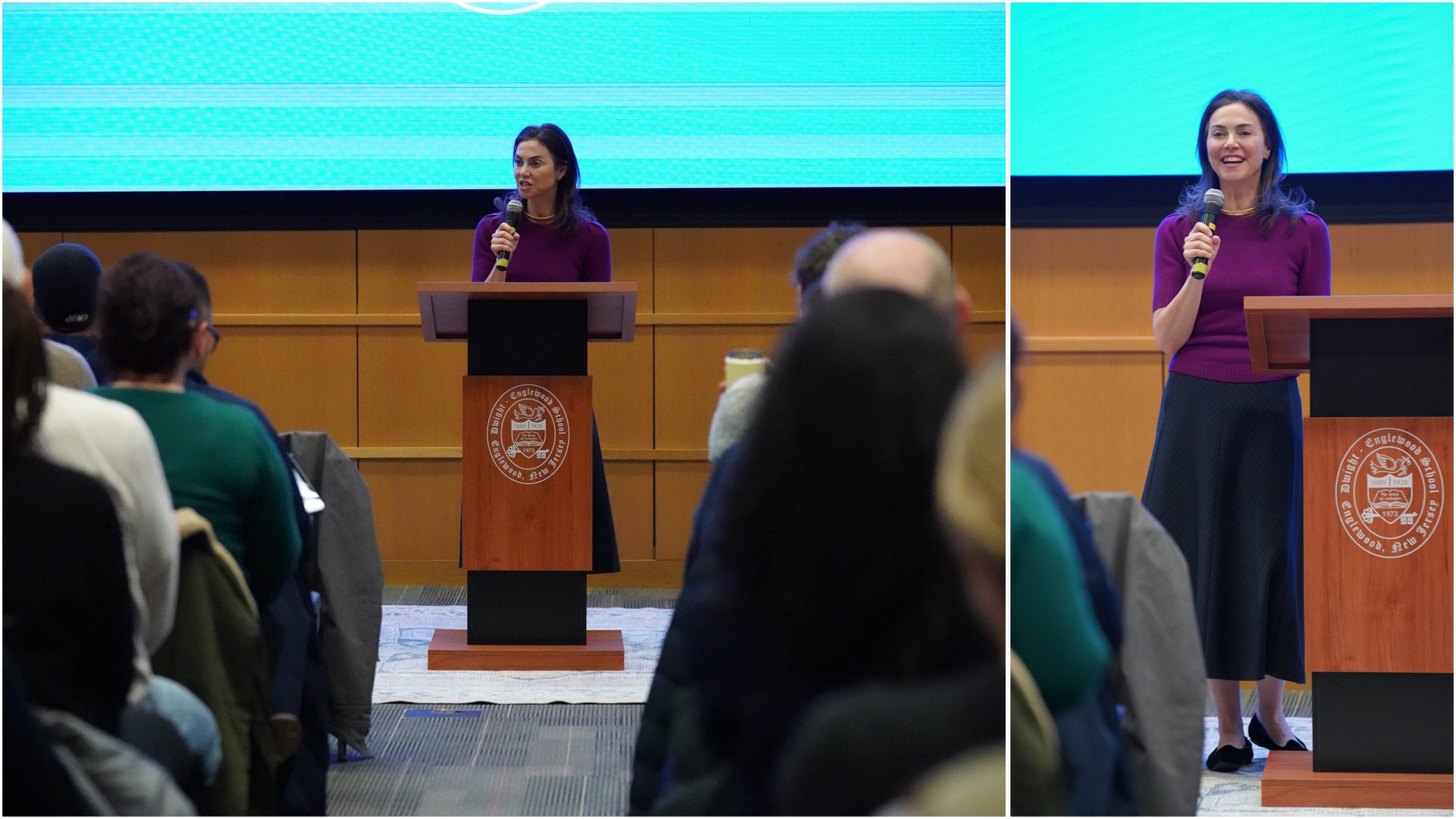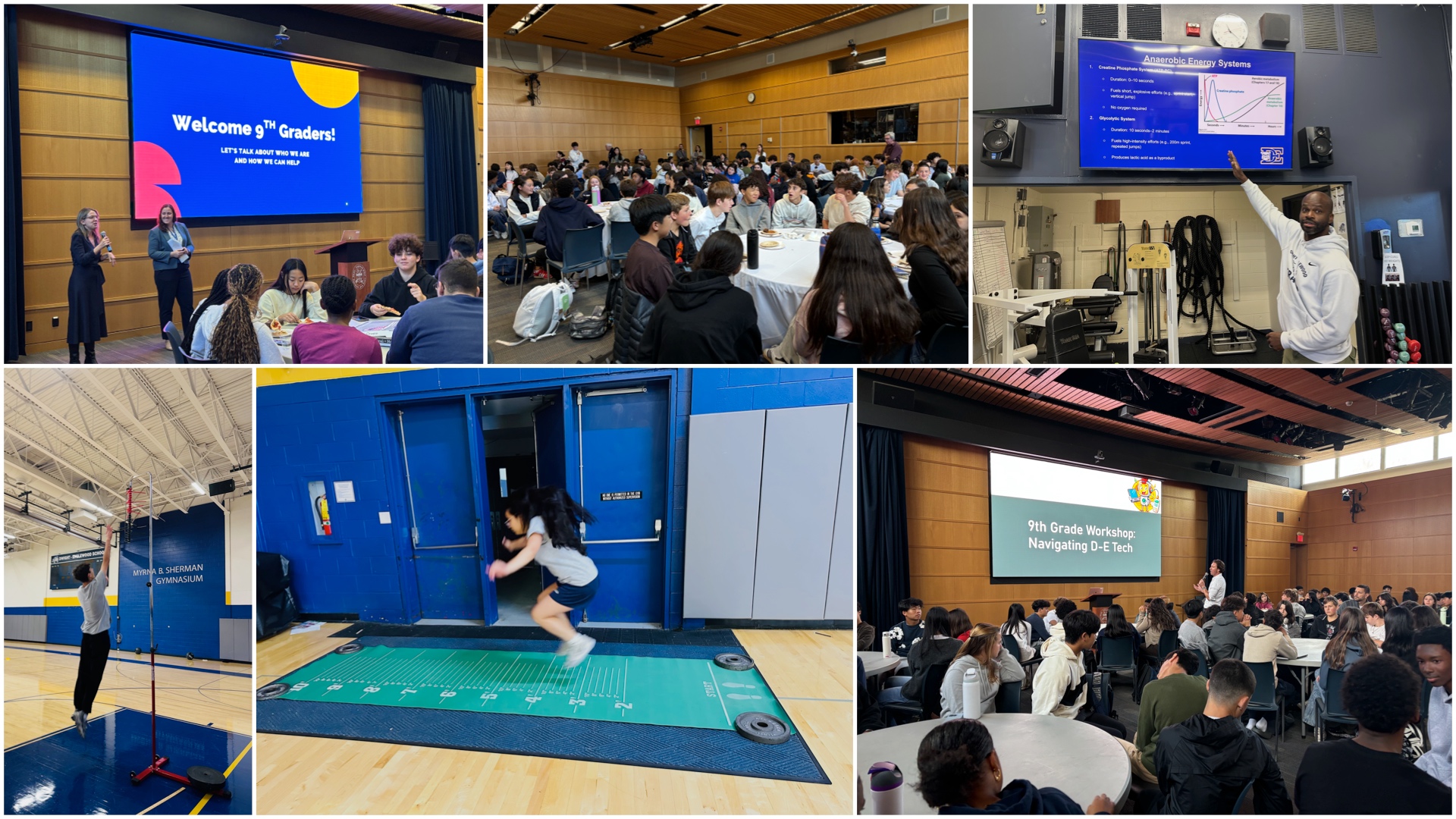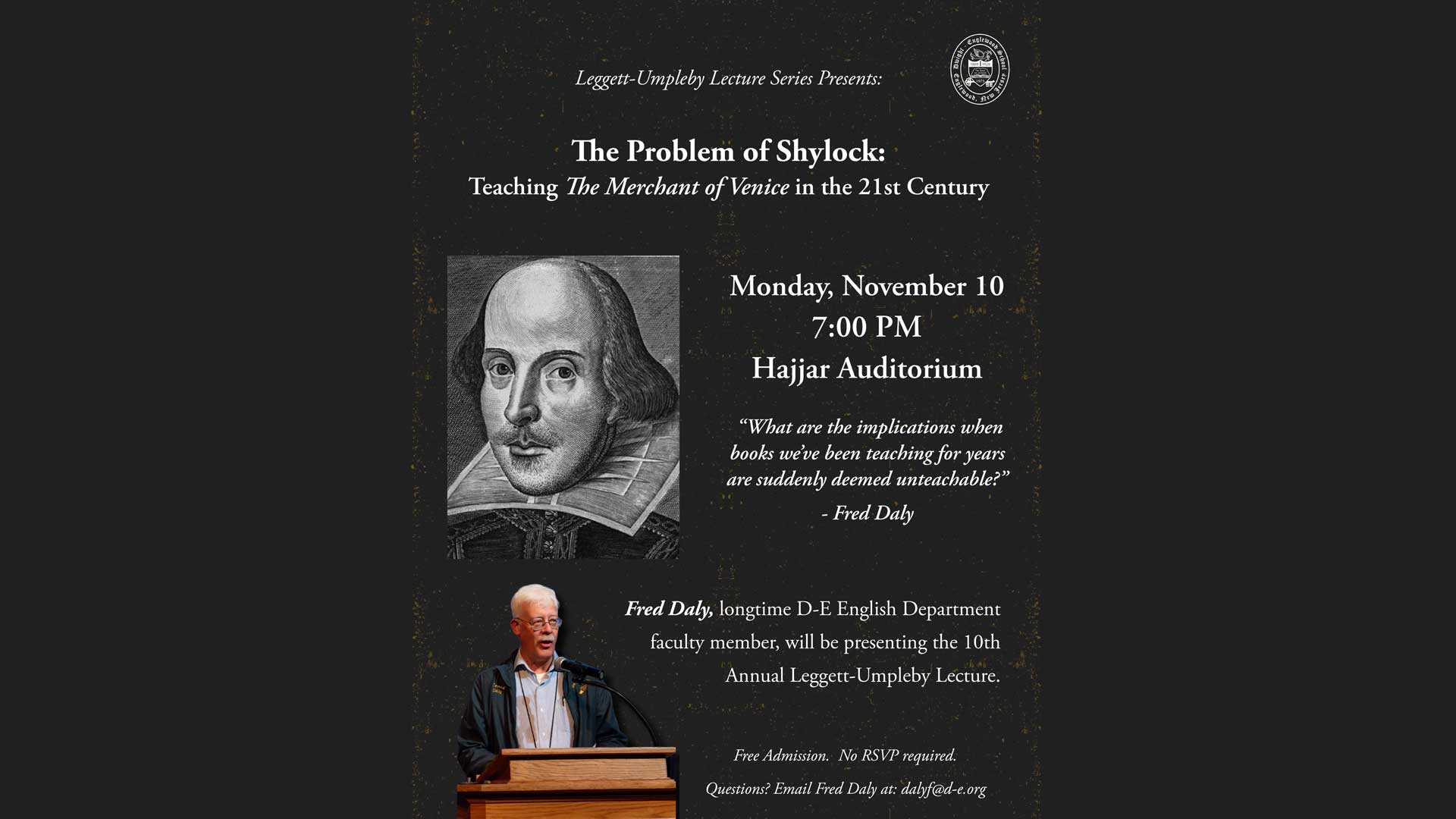To show how and why D-E is such a vibrant “community of learners,” we have introduced a monthly series that spotlights our mission in action, core values, and academic departments, starting with our innovative Art & Design Department.
Department Chair and Teacher Ms. Marisol Diaz, who curates D-E’s Swartley Gallery and is a former glassblower, stresses the importance of “meaning making” when creating art—something that goes beyond creating a commodity.
“So they’re bringing something of themselves… something of their identity and who they are,” says Ms. Diaz. “And they’re also learning about empathy and the fact that everyone in the classroom will have a different perspective and a different framing to the same still life.”
“[Students are] learning about empathy and the fact that everyone in the classroom will have a different perspective and a different framing to the same still life.”
Ms. Diaz says art in all its forms incorporates interdisciplinary thinking, such as the geometry used for composition, structure, and aesthetics; the chemistry involved in glazing ceramics; or the references to literature you’ll find in students’ drawings, paintings, and sculpture art.
She explains how our students experience “expression” in unique and innovative ways. For example, Art & Design Faculty Mr. John McCabe, who teaches Photography to Upper School (US) students, recently taught a lesson on “painting with light,” using a camera on a tripod that snapped students waving around a flashlight in a darkened room.
“In [this] exercise, students learn to creatively capture photographs using two different light sources combined with a long shutter speed,” resulting in dramatic streaks of light, explains Mr. McCabe. “By using manual exposure instead of automatic settings, students gain full control over how their images are captured, rather than relying on the camera to make decisions.” Mr. McCabe says the inspiration came from Picasso’s “light drawings,” in which he worked with a photographer to capture dynamic images of centaurs, bulls, and other designs. “If Picasso can do it, we can do it!” exclaims Mr. McCabe.
In a separate lesson, students study the work of renowned portrait photographer Annie Leibovitz and “are tasked with capturing a portrait inspired by her distinctive style,” says Mr. McCabe.
In Ms. Diaz’s AP Studio Art class, students have flexibility as they create 2D or 3D art to further their Line of Inquiry (LOI), which is a central theme that directs their creative process. For example, Alex Lewis ’26 describes one of his 3D art pieces as his way to “capture the feeling of isolation… feelings of being entrapped.” He says he was inspired by his experience with someone he knows who is suffering from mental illness.
Another AP Studio Art student, Lilah Carroll ’27, says her LOI explores “humans’ relationship with guilt.” One of her recent paintings represents “guilt pulling back on our desires,” she says.
“D-E has an open mindset about the arts,” says AP Studio Art student Mara Gualtieri-Horowitz ’26. “Teachers are open to helping you experiment with different materials.” Classmate Grace Dalgetty ’26 adds that she appreciates that faculty “support and help rather than shut down ideas,” which helps the D-E art community grow stronger.
“In all my classes, whenever possible, I prioritize voice and choice with subject matter and use a wide range of materials,” says Rachel Deutsch-Brusky, Art & Design Faculty. “This makes the work and process meaningful and motivating, and it helps students to discover their artistic strengths and passions.”
“This makes the work and process meaningful and motivating, and it helps students to discover their artistic strengths and passions.”
Her Painting and Drawing students recently worked on creating self-portraits and other works that have personal meaning for them. “Many students used watercolor paint to stain gray-toned drawing paper, before creating detailed drawings with colored pencil over top,” explains Ms. Brusky. She says lessons such as these center on “deeper skills creating light, form, atmosphere, and depth.”
In her Sculpture classes, Ms. Brusky says students are creating plaster casts of their own hands in expressive poses and adding other sculptural elements to communicate their ideas. “Themes for the project include protecting the planet and [displays of] how we each see the world in unique ways,” she says.
Touching on the idea from Dwight School founding Co-Principal Euphemia Creighton of fostering “whole-souled citizens,” Ms. Brusky says students also learn that art extends outside of the classroom. As Faculty Advisor of the US Art in Action Club, Ms. Brusky gives one recent example in which students and faculty in the club created a series of 16×20 paintings for the newly renovated Department of Radiation Oncology at Columbia University Irving Medical Center.

"Peaceful Places Near and Far"
by Rachel Brusky

By Marisol Diaz

By Paul Edwards

"Louis Armstrong Stadium"
by Mara Gualtieri-Horowitz

"Reverie"
by Grace Tomin

"Summer Days"
by Nisha Rajan

"Montauk's Promise"
by Cici Liu

"Flight to Light"
by Krithi Mitta

"One Way to Broadway"
by Andrea Chu

By Sarah Chun

By Kaitlyn Tee

"Nighttime Tunes"
by Lilah Carroll

"Grandpa in Central Park"
by Maleah Liao
“Each painting was completely unique but connected to the theme of New York and New York City in some way,” says Ms. Brusky. “This collection of work is being displayed throughout the clinic to help bring peace and joy to patients, families, and the staff at the hospital in challenging times.”
A reception for the artwork is being planned for the near future.
Similarly, the HOPE: Fashion With a Purpose club, advised by Ms. Caitlyn Young, US Art and Design Faculty, has traditionally hosted the annual HOPE Fashion Show fundraiser, exhibiting creations from students and faculty, and benefiting community organizations such as last year’s Limb Kind Foundation.
In another example of experiential learning, students in Ms. Young’s advanced Ceramics classes have the opportunity to attend the annual Old Church Pottery Show, known as “The Road to Demarest,” thanks to its proximity to the D-E campus.
“The show is a big deal in the pottery world,” says Ms. Young, whose students in her Wheel-Throwing classes learn not only about the art being showcased, but also about the artists who are represented.
Innovative approaches are also highlighted in the Middle School (MS). Lydia Scrivanich, P ’27, MS Art & Design Department Faculty, says she is focused on studying new developments in AI as it relates to the world in general and what it means for schools and student learning. In her Studio Art 8 and Art & Design Explorations classes, Ms. Scrivanich is introducing a project titled “Graphic Poster for a Cause.”
“In this work, students choose an issue to highlight in a self-designed poster,” says Ms. Scrivanich. “They create original graphics and text, and learn about effective layout designs.” She plans to have students use the Flint application’s chatbot feature to help them receive feedback during the planning process for this project. “More specifically, students will be able to respond to prompts for them to ‘dig deeper’ within the societal or community issue they would like to portray in their work,” she adds. “I strongly feel that the AI tools… can really serve to breathe new life into student reception of projects such as these, and help them realize the positive aspects of combining technology tools with their present skills and creativity to strengthen their artistic voices.”
Ms. Scrivanich reiterates that inclusivity is also prioritized in the Art & Design Department. “The work that students create is frequently centered around their identities and allows students to have voice and choice,” she says.
She points to her students’ “Landmark Illustration Project,” for which students are asked to reflect on a personal place they deem a landmark that holds meaning for them and their family. “Students can choose from themes such as ‘Spiritual,’ ‘Cultural,’ ‘Inspirational,’ ‘Religious,’ ‘Joyful,’ ‘Aspirational,’ or any other self-chosen theme that fits the parameters,” she explains, adding that they can share their work with classmates… “in a space that is respectful, kind, and celebratory.”
“Additionally, I have incorporated the ‘8 Studio Habits of Mind’ from Harvard’s ‘Project Zero’ into daily teaching,” says Ms. Scrivanich. They are Stretch and Explore; Express; Develop Craft; Envision; Understand Arts Community; Engage and Persist; and Reflect.
“The work that students create is frequently centered around their identities and allows students to have voice and choice.”
“In the Lower School Art and Design Studio, there is a consistent flow of creativity and inclusive innovation,” says Ms. Christine Hanaway Maloney, Lower School (LS) Art & Design Faculty. “Upon arrival at their art studio, students are asked to enter the space in mindful calmness and in doing so they are committed to following the studio rules and habits of mind that are revisited every year in all divisions.”
Among these rules is making sure each student feels comfortable creating work knowing it will be reviewed and discussed with constructive feedback. “This requires students to think carefully before articulating formal critique and allows them to exercise their empathy skills,” says Ms. Maloney.
There are also opportunities to share their work with the wider community such as during the annual Swartley Gallery LS Exhibition in December. This year the large-scale collaborative project includes second graders learning about using wet paper with watercolor and working with different color combinations based on the color wheel.
As is the focus of the Art & Design Department as a whole, the actual artwork being produced in the LS Art & Design Studio highlights process over product.
“Essentially, the process becomes a joyful journey, where artists are encouraged to take risks and find new techniques and ideas,” notes Ms. Maloney. “In this way, we find artmaking a way to grow and explore together.”
Related Video Content
Explore this topic further with a curated video that complements the article.





